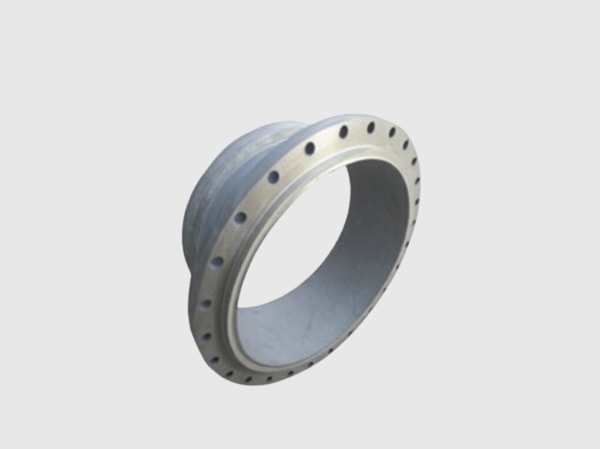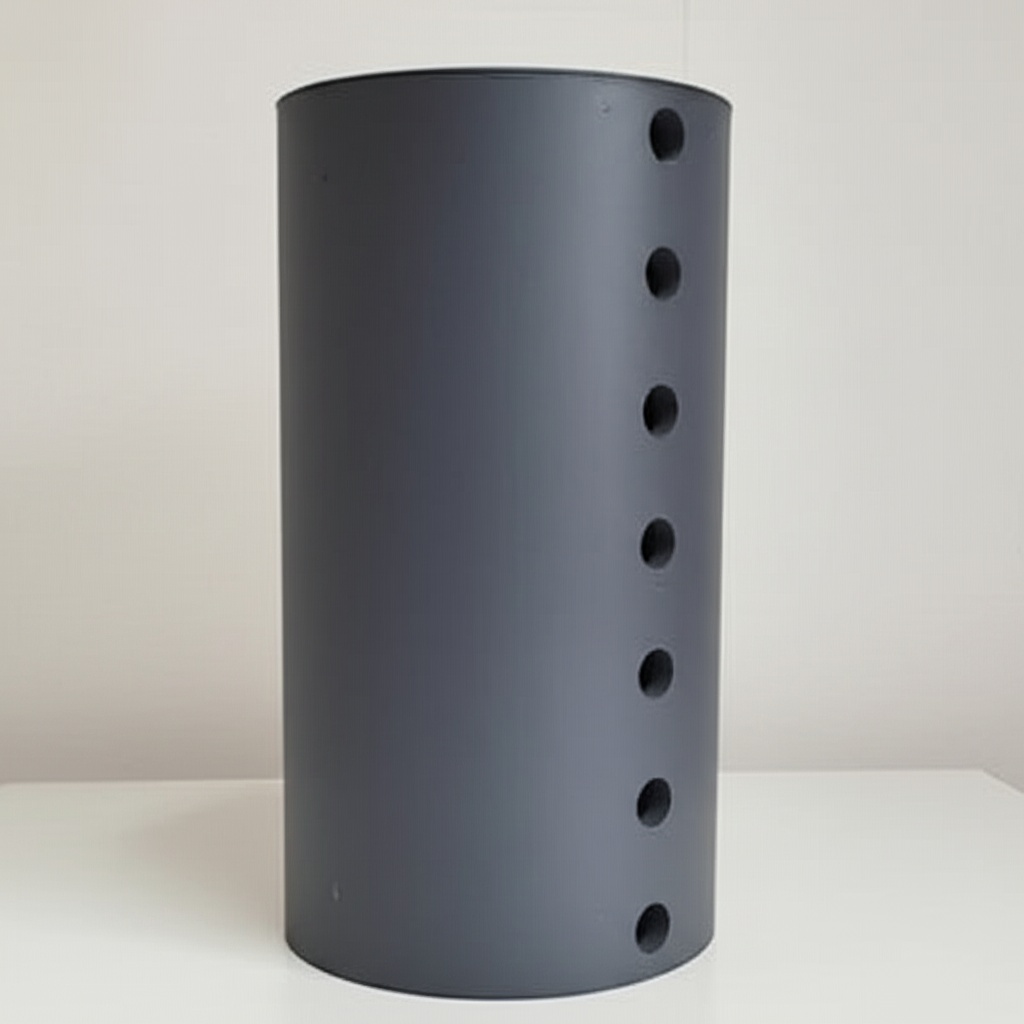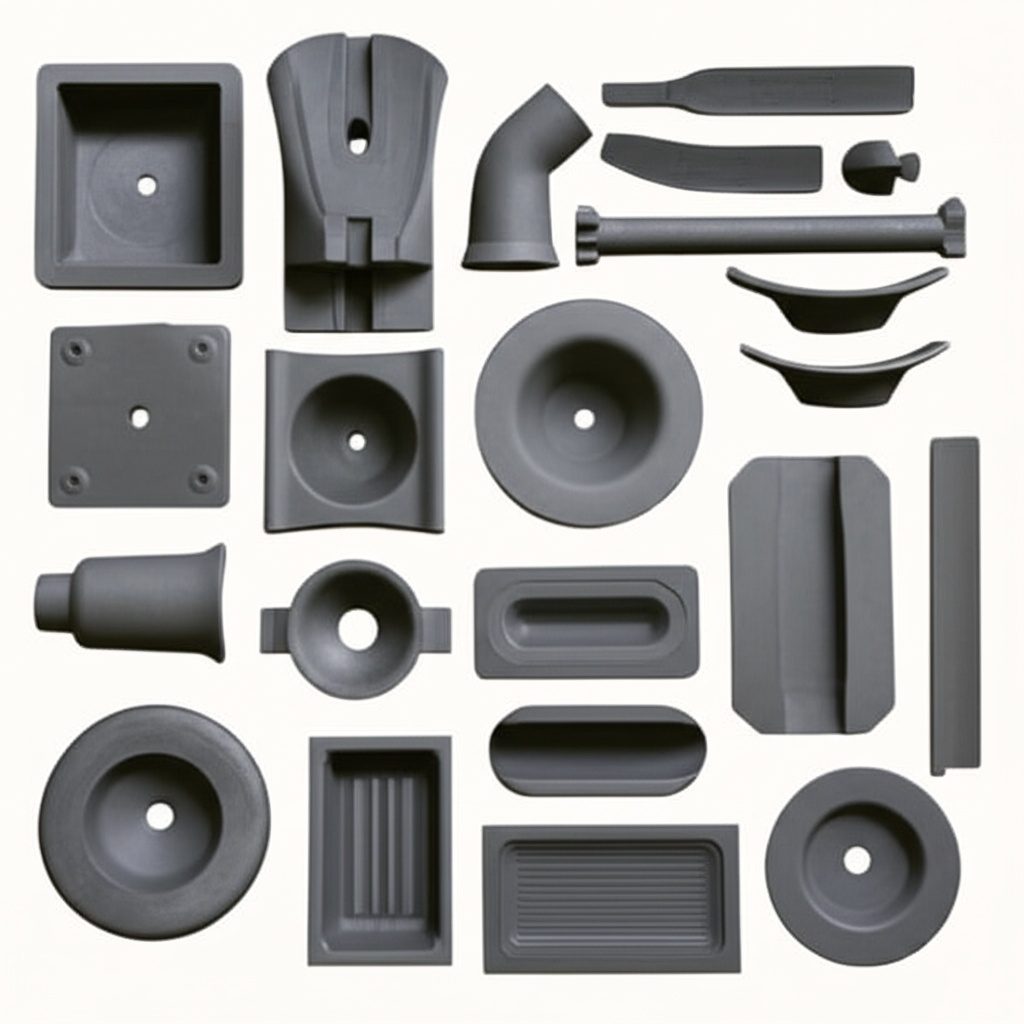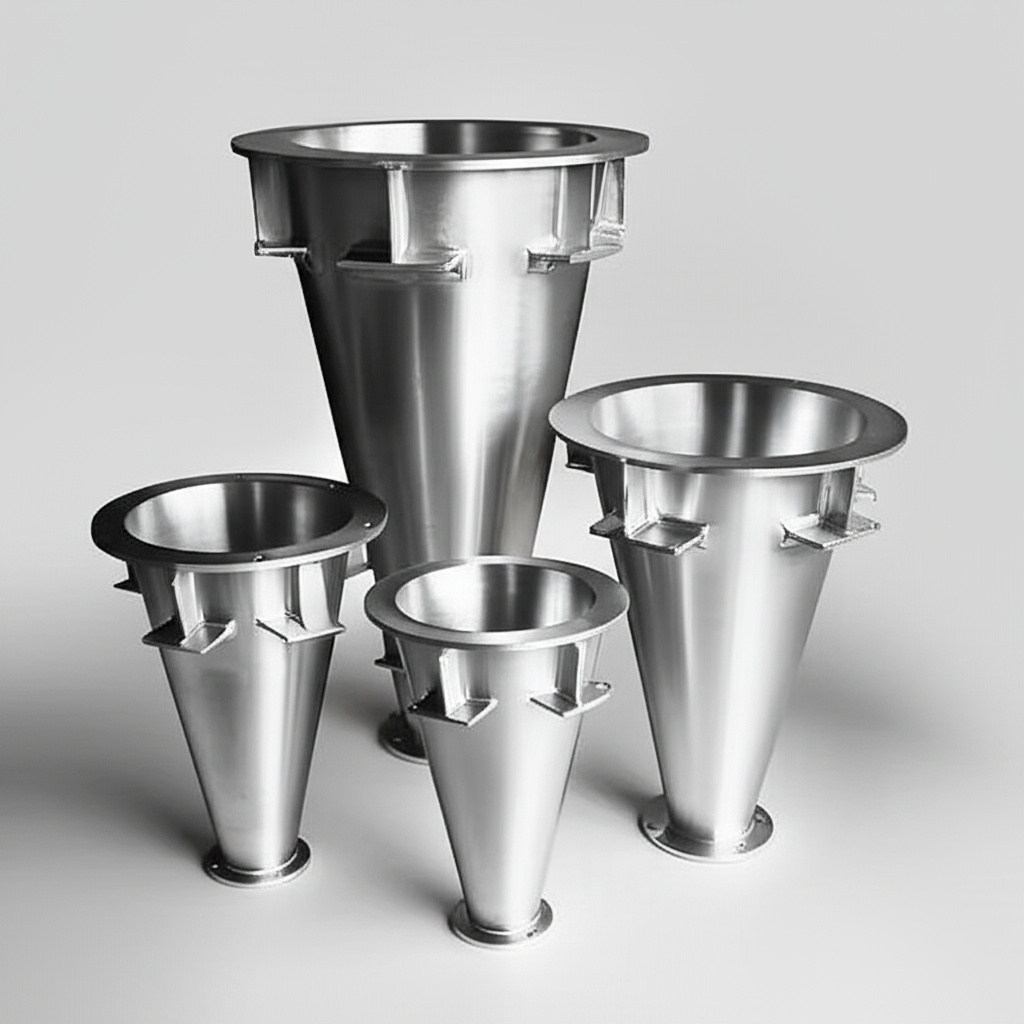Moduły kontroli korekcji współczynnika mocy SiC dla prostowników czołowych >99% PF i <3% THD

Udział
Przegląd produktów i znaczenie dla rynku w 2025 r.
Moduły sterowania korekcją współczynnika mocy (PFC) SiC to wstępnie zaprojektowane stopnie sterowania i mocy, które łączą tranzystory MOSFET/diody z węglika krzemu ze sterowaniem cyfrowym, wykrywaniem i ochroną, aby zapewnić współczynnik mocy (PF) >99% i całkowite zniekształcenia harmoniczne (THD) <3% w szerokim zakresie obciążeń. Są one kamieniem węgielnym wysokowydajnych prostowników wejściowych w zasilaczach UPS, VFD, SMPS, falownikach PV i przemysłowych systemach DC. W porównaniu z implementacjami PFC z epoki krzemu, moduły SiC PFC działają chłodniej przy wyższych częstotliwościach przełączania, umożliwiając mniejsze elementy magnetyczne, niższy hałas akustyczny i ściślejszą jakość zasilania w trudnych warunkach sieciowych Pakistanu.
Dlaczego ma to znaczenie w krajobrazie Pakistanu w 2025 roku:
- Centra danych i pomieszczenia maszyn finansowych wymagają czystego prądu wejściowego, wysokiego PF i minimalnych harmonicznych, aby ustabilizować zasilanie i zmniejszyć nagrzewanie transformatorów.
- Przemysł tekstylny, cementowy i stalowego zakłady borykają się z zapadami/wzrostami napięcia i zniekształconą siecią; solidny PFC poprawia jazdę i zmniejsza niepożądane wyzwalania.
- Presja OPEX i ograniczenia przestrzenne wymagają wyższej gęstości i zmniejszonego obciążenia chłodzeniem, co umożliwia niska strata przełączania i przewodzenia SiC.
- Impet regulacyjny w kierunku jakości zasilania i wydajności jest zgodny z celami NTDC Grid Code, tworząc przewagę konkurencyjną w przetargach.
Moduły sterowania SiC PFC firmy Sicarb Tech obsługują topologie totem-pole, przeplotu boost (CCM/CRM) i prostownika wiedeńskiego, z wbudowanym sterowaniem cyfrowym, wykrywaniem prądu/napięcia i kompleksowymi zabezpieczeniami, gotowe do wpięcia w wejścia od 3 kW do 250+ kW i równoległe do systemów klasy MW.

Specyfikacje techniczne i zaawansowane funkcje
Reprezentatywne możliwości (konfigurowalne):
- Parametry elektryczne
- Wejście AC: 220/230 VAC jednofazowe, 380/400/415 VAC trójfazowe (50 Hz)
- Wyjście DC: 380–800 Vdc typowe (konfigurowalne do 1000 Vdc dla wejść PV 1500 Vdc za pośrednictwem topologii wiedeńskiej)
- Moc: 3–50 kW na moduł (chłodzony powietrzem), 30–250 kW (chłodzony cieczą); możliwość równoległego połączenia do >1 MW
- Wydajność
- PF: ≥0,99 przy obciążeniu 20–100%; THD: ≤3% ze złagodzeniem zniekształceń linii
- Sprawność: 97,5–99,0% sprawności stopnia w zależności od topologii i poziomu mocy
- Częstotliwość przełączania: 45–120 kHz (totem-pole/przeplot), 20–60 kHz (Wiedeń)
- Sterowanie i wykrywanie
- Sterowanie cyfrowe (MCU/FPGA) z trybem średniego prądu lub CRM, adaptacyjnym czasem martwym i sterowaniem napięciem z wyprzedzeniem
- Podwójne czujniki prądu na fazę, precyzyjne wykrywanie napięcia szyny, wejścia termiczne NTC/RTD
- Kompensacja harmonicznych i śledzenie zniekształceń sieci dla zmiennych sieci w Pakistanie
- Ochrona i niezawodność
- OCP/OVP/UVP/OTP, kontrola prądu rozruchowego, łagodny rozruch, obsługa zaników napięcia i odzyskiwanie strat linii
- Sterowniki z obsługą DESAT, miękkie wyłączanie i układ odporny na EMI z połączeniami Kelvina
- Koordynacja przepięć/EMC z MOV/TVS i dławikami trybu wspólnego w celu spełnienia normy IEC 61000
- Mechaniczne i termiczne
- Rozprowadzacze ciepła SSiC/RBSiC; opcje dla radiatorów żebrowanych lub płyt chłodzących
- Złącza zasilania/danych typu blind-mate do wymiany w szafie na gorąco
- Powłoka konformalna i warianty z klasą IP dla młynów i zakładów o dużym zapyleniu
- Interfejsy i zgodność
- Komunikacja przyjazna dla SCADA: Modbus/RS485, CAN, Ethernet; opcjonalna bramka w chmurze
- Standardy: IEC 61000-3-2/3-12 (harmoniczne), IEC 61000-6-2/6-4 (EMC), IEC 62040 (UPS), IEC 62477-1 (konwertery mocy); zgodne z praktykami PEC i NTDC Grid Code
Wyróżniki Sicarb Tech:
- Wstępnie dostrojone biblioteki sterowania dla prostowników totem-pole (PWM unipolarne/bipolarne) i wiedeńskich
- Analityka predykcyjna termiczna i żywotności komponentów zintegrowana z diagnostyką
- Oprogramowanie układowe z możliwością aktualizacji w terenie i narzędzia uruchomieniowe dostosowane do lokalnej jakości zasilania
Czystszy prąd wejściowy i wyższa gęstość dla przemysłowych wejść
| Jakość zasilania i wydajność w warunkach sieciowych Pakistanu | Moduł sterowania SiC PFC (Sicarb Tech) | Implementacja PFC oparta na krzemie |
|---|---|---|
| Współczynnik mocy w zakresie obciążenia | ≥0,99 (obciążenie 20–100%) | 0,95–0,98 typowe |
| THD prądu wejściowego | ≤3% ze złagodzeniem zniekształceń | 5–10% typowe bez dużych filtrów |
| Częstotliwość przełączania i elementy magnetyczne | 45–120 kHz; mniejsze dławiki | 20–40 kHz; większe elementy magnetyczne |
| Sprawność stopnia | 97,5–99,0% | 94–96% |
| Powierzchnia termiczna i chłodzenie | Zmniejszone radiatory, cichsze wentylatory | Większe radiatory, wyższa moc wentylatora |
Kluczowe zalety i sprawdzone korzyści
- Wydajność przyjazna dla sieci: THD ≤3% i PF ≥0,99 zmniejszają nagrzewanie transformatorów i spadek napięcia, poprawiając ogólną stabilność w miejscu instalacji.
- Wymierne oszczędności OPEX: 2–3% wzrost sprawności stopnia w porównaniu z PFC krzemowym plus niższe obciążenie chłodzeniem w pomieszczeniach UPS i szafach MCC.
- Wysoka gęstość mocy: Wyższa częstotliwość przełączania i niskie straty zmniejszają elementy magnetyczne i filtry, zwalniając miejsce w zatłoczonych panelach.
- Solidna jazda: Adaptacyjne sterowanie utrzymuje regulację podczas zapadów i stanów nieustalonych, powszechnych w przemysłowych zasilaczach.
Cytat eksperta:
„Prostowniki totem-pole i wiedeńskie zbudowane na urządzeniach SiC osiągają współczynnik mocy bliski jedności i bardzo niskie THD przy wysokiej częstotliwości, co pozwala na niespotykaną gęstość mocy i wydajność dynamiczną.” — IEEE Power Electronics Magazine, High-Density Front Ends 2024
Zastosowania w świecie rzeczywistym i wymierne historie sukcesu
- Modernizacja wejścia UPS w centrum danych w Lahore:
- 100 kW moduły SiC PFC typu totem-pole z cyfrową kompensacją harmonicznych.
- Wyniki: PF ≥0,99 w zakresie obciążenia 25–100%; THD zmniejszone z 6,5% do 2,4%; energia chłodzenia pomieszczenia zmniejszona o 8,7%; ogólna sprawność UPS wzrosła do 97,3%.
- Napędy tekstylne w Faisalabad, szyna DC:
- 30 kW przeplot SiC PFC zasilający łącze DC z wieloma falownikami.
- Wyniki: 18% niższa temperatura szafy; rozmiar filtra EMI zmniejszony o 30%; zdarzenia wyzwalania podczas zapadów zasilania zmniejszone o 20%.
- Zasilanie pomocnicze
- Stopień prostownika wiedeńskiego dla wejścia 400 VAC do szyny 800 Vdc.
- Wydajność: 98,5% sprawności stopnia; PF 0,995; mniejszy filtr LCL obniżył objętość obudowy o 22%.
【Podpowiedź dotycząca obrazu: szczegółowy opis techniczny】 Wizualizacja trójpanelowa: 1) Schemat PFC typu totem-pole z przełącznikami SiC i diagramem czasowym; 2) Wykresy sprawności w funkcji obciążenia i PF/THD z pomiarów terenowych; 3) Obraz termiczny kompaktowego dławika i radiatora w temperaturze otoczenia 45°C. Oznacz PF ≥0,99, THD ≤3%, przełączanie 60–100 kHz i emulację profilu zapadów sieci pakistańskiej. Fotorealistyczne, 4K.
Rozważania dotyczące wyboru i konserwacji
- Wybór topologii:
- Totem-pole dla najwyższej gęstości i sprawności w układach jedno-/trójfazowych; Wiedeński dla solidnych układów trójfazowych ze zmniejszonym obciążeniem elementów.
- CRM dla sprawności przy małym obciążeniu; CCM dla przewidywalnego kształtowania prądu przy wyższej mocy.
- Margines napięcia/prądu:
- Elementy 650–1200 V w zależności od szyny DC; uwzględnij 20–30% marginesu termicznego i udarowego.
- Potwierdź koordynację MOV/TVS z zabezpieczeniem przeciwprzepięciowym obiektu.
- Projekt termiczny i środowiskowy:
- Sprawdź chłodzenie dla otoczenia 40–45°C; rozważ chłodzenie cieczą powyżej ~100 kW na ramę.
- Zastosuj powłokę konformalną i obudowy z nadciśnieniem dla pyłu cementowego/tekstylnego.
- EMC i okablowanie:
- Zminimalizuj indukcyjność pętli; umieść kondensatory foliowe blisko węzłów przełączających.
- Dostrój dławiki CM i kondensatory X/Y, aby spełnić wymagania normy IEC 61000-6-4, unikając jednocześnie problemów z upływem.
- Diagnostyka i cykl życia:
- Włącz rejestrowanie danych PF, THD, tętnień szyny, obrotów wentylatora i odchyleń temperatury.
- Używaj alertów predykcyjnych dla nagrzewania dławika i wzrostu ESR kondensatora.
Czynniki sukcesu w branży i referencje klientów
- Czynniki sukcesu:
- Wczesne badanie harmonicznych i ocena obciążenia transformatora
- Współprojektowanie elementów magnetycznych dla pracy o wysokiej częstotliwości
- Testy pilotażowe w szczycie lata w celu sprawdzenia marginesów chłodzenia
- Szkolenia z zakresu narzędzi uruchomieniowych i aktualizacji oprogramowania układowego
- Rekomendacja (Kierownik ds. Obiektów, główne centrum danych banku w Karaczi):
- „Przejście na moduły PFC SiC zapewniło zgodny z siecią PF i THD ze zauważalnym spadkiem zapotrzebowania na chłodzenie pomieszczenia. Uruchomienie było szybkie dzięki wbudowanym analizom.”
Przyszłe innowacje i trendy rynkowe
- Perspektywy na lata 2025–2027:
- Szersze zastosowanie dwukierunkowego PFC dla hybryd UPS/BESS (wsparcie sieci i przycinanie szczytów)
- Adaptacyjne kształtowanie prądu wspomagane przez sztuczną inteligencję w przypadku zniekształconej sieci
- Kontroler i sterowniki bramek w jednym pakiecie dla dalszej odporności na EMI
- Ulepszenia kosztowe wynikające ze skalowania płytek SiC 200 mm i lokalnych partnerstw montażowych
Perspektywa branżowa:
„Prostowniki z szerokim pasmem wzbudzenia zmieniają jakość zasilania obiektów, czyniąc wysokogęste, niskie THD urządzenia opłacalnymi nawet w trudnych sieciach.” — Perspektywy technologiczne IEA 2024, sekcja elektroniki mocy
Najczęściej zadawane pytania i odpowiedzi ekspertów
- Czy SiC PFC może spełnić wymagania PF ≥0,99 i THD ≤3% w przypadku zniekształconej sieci pakistańskiej?
- Tak. Dzięki kompensacji harmonicznych i solidnej kontroli prądu, nasze moduły utrzymują cele w szerokim zakresie zniekształceń i zapadów.
- Która topologia jest najlepsza dla UPS o mocy 100–250 kW?
- Prostownik wiedeński lub trójfazowy totem-pole w zależności od preferencji dotyczących filtra i sterowania; zapewniamy analizy kompromisów między stratami a filtrami.
- O ile możemy zmniejszyć rozmiar radiatora i elementów magnetycznych?
- Typowe redukcje wynoszą 20–35% w porównaniu z PFC krzemowym, w zależności od częstotliwości przełączania i otoczenia.
- Czy potrzebujemy specjalnych filtrów?
- Zazwyczaj wystarczają mniejsze filtry LCL/CM; nasze zestawy EMI są dostrojone do spełnienia wymagań emisji IEC 61000-6-4 i odporności -6-2.
- Jaki jest typowy zwrot z inwestycji?
- 12–24 miesiące z oszczędności energii, zmniejszonego chłodzenia i zmniejszonej konserwacji — szybciej w zastosowaniach 24/7 UPS/danych.
Dlaczego to rozwiązanie działa w Twoich operacjach
Moduły sterowania PFC SiC firmy Sicarb Tech łączą szybkie elementy SiC z solidnym sterowaniem cyfrowym i ochroną, aby zapewnić bliski jedności PF i niski THD w warunkach sieci pakistańskiej. Wynikiem jest czystszy prąd wejściowy, wyższa ogólna sprawność systemu, mniejsze obudowy i mniej zdarzeń zakłócających — istotne korzyści dla centrów danych, linii tekstylnych, pomocniczych urządzeń cementowych i infrastruktury zakładów stalowych.
Połącz się ze specjalistami, aby uzyskać niestandardowe rozwiązania
Przyspiesz wydajność prostownika front-end dzięki Sicarb Tech:
- Ponad 10 lat doświadczenia w produkcji SiC, wspartego przez Chińską Akademię Nauk
- Rozwój niestandardowy w zakresie pakietów R-SiC, SSiC, RBSiC i SiSiC oraz zoptymalizowane elementy magnetyczne PFC
- Transfer technologii i usługi zakładania fabryk w celu lokalizacji produkcji i testowania
- Kompleksowe rozwiązania od przetwarzania materiałów po gotowe moduły PFC z dokumentacją zgodności
- Sprawdzony dorobek z ponad 19 przedsiębiorstwami; szybkie prototypowanie, testy terenowe i modelowanie ROI
Uzyskaj bezpłatną ocenę front-endu PFC (PF/THD/sprawność) i plan ROI specyficzny dla danego miejsca.
- Email: [email protected]
- Telefon/WhatsApp: +86 133 6536 0038
Zarezerwuj terminy inżynieryjne i produkcyjne na Q4 2025, aby zapewnić dostawę przed krytycznymi oknami uruchomieniowymi.
Metadane artykułu
- Ostatnia aktualizacja: 2025-09-11
- Następny zaplanowany przegląd: 2025-12-15
- Autor: Zespół inżynierii zastosowań Sicarb Tech
- Contact: [email protected] | +86 133 6536 0038
- Skupienie na standardach: IEC 61000-3-2/3-12, IEC 61000-6-2/6-4, IEC 62040, IEC 62477-1; zgodne z praktykami PEC i kryteriami jakości NTDC Grid Code

About the Author: Sicarb Tech
We provide clear and reliable insights into silicon carbide materials, component manufacturing, application technologies, and global market trends. Our content reflects industry expertise, practical experience, and a commitment to helping readers understand the evolving SiC landscape.




